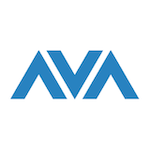Platform Features
TradeStation offers a robust suite of trading tools tailored for active traders, including advanced charting and automated trading capabilities. Interactive Brokers provides a comprehensive platform suitable for both individual and institutional investors, with extensive market access and customizable trading interfaces.
Trading Tools and Resources
Both platforms provide a range of analytical tools, real-time market data, and educational resources. TradeStation emphasizes its proprietary scripting language for creating custom indicators, while Interactive Brokers supports a wide array of third-party integrations and APIs for automated trading strategies.
Fee Structure
TradeStation and Interactive Brokers have competitive fee structures, but they cater to different trading volumes and styles. TradeStation’s pricing is generally more favorable for active traders with higher volumes, whereas Interactive Brokers offers a tiered pricing model that benefits both high-frequency and occasional traders.
Account Types and Minimums
TradeStation offers various account types, including individual, joint, and retirement accounts, with no minimum deposit for standard accounts. Interactive Brokers provides a broader range of account options, including institutional accounts, but may require higher minimum deposits depending on the account type and services selected.
Customer Support and User Experience
Both brokerages prioritize customer support, offering multiple channels for assistance. TradeStation is known for its intuitive user interface and dedicated customer service for traders, while Interactive Brokers excels in providing extensive resources and support for a diverse client base.
Trading on financial markets involves risk, and it is important to consider your financial situation and risk tolerance before engaging in any trading activities.

